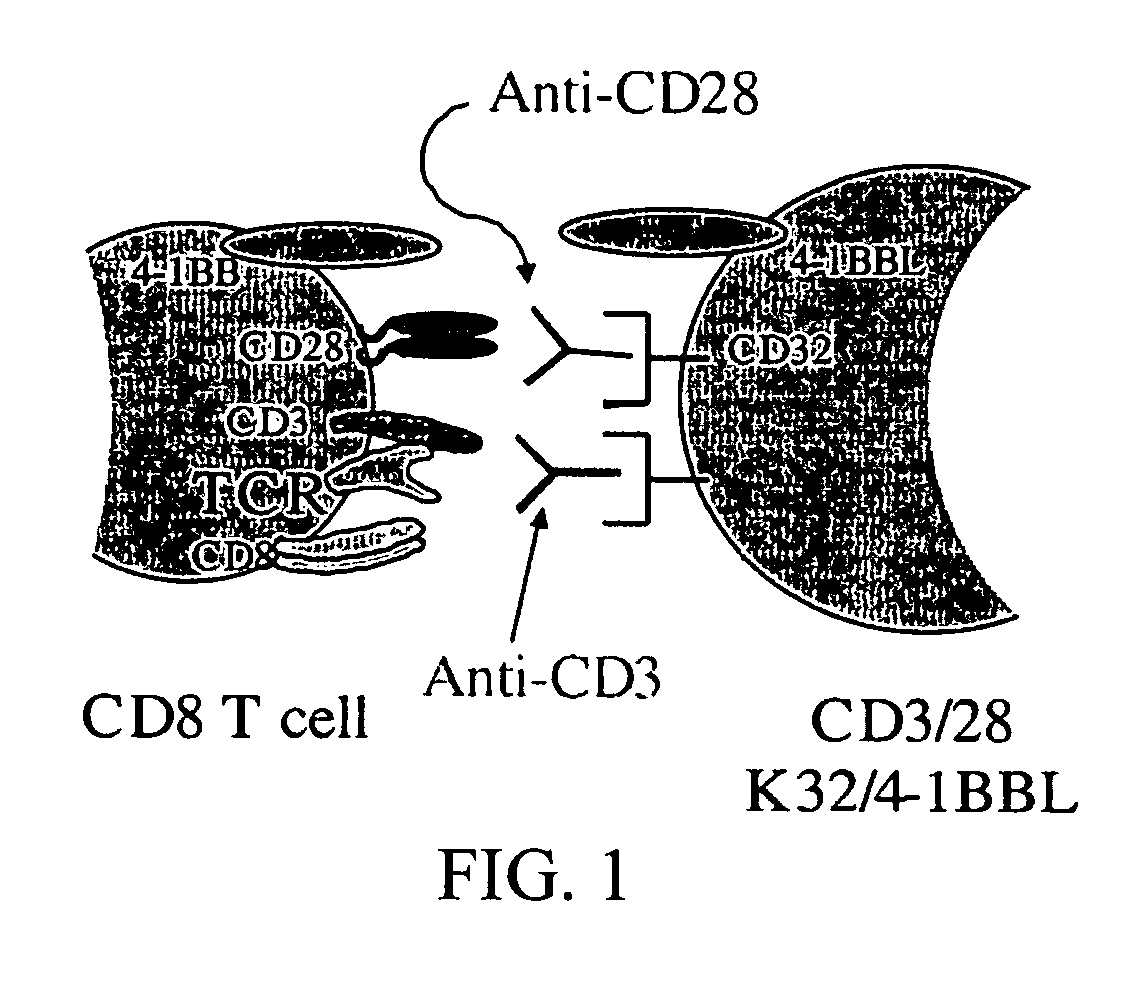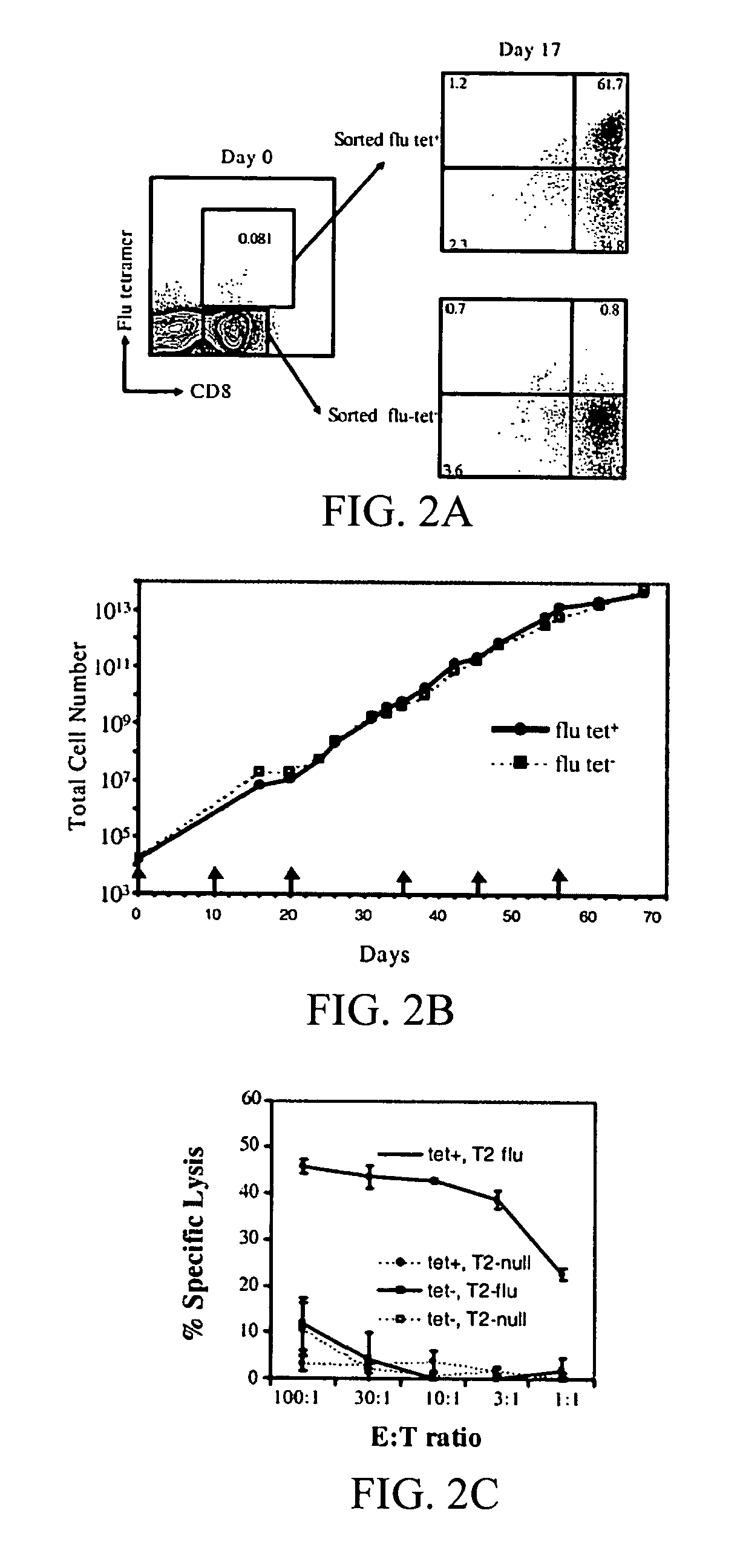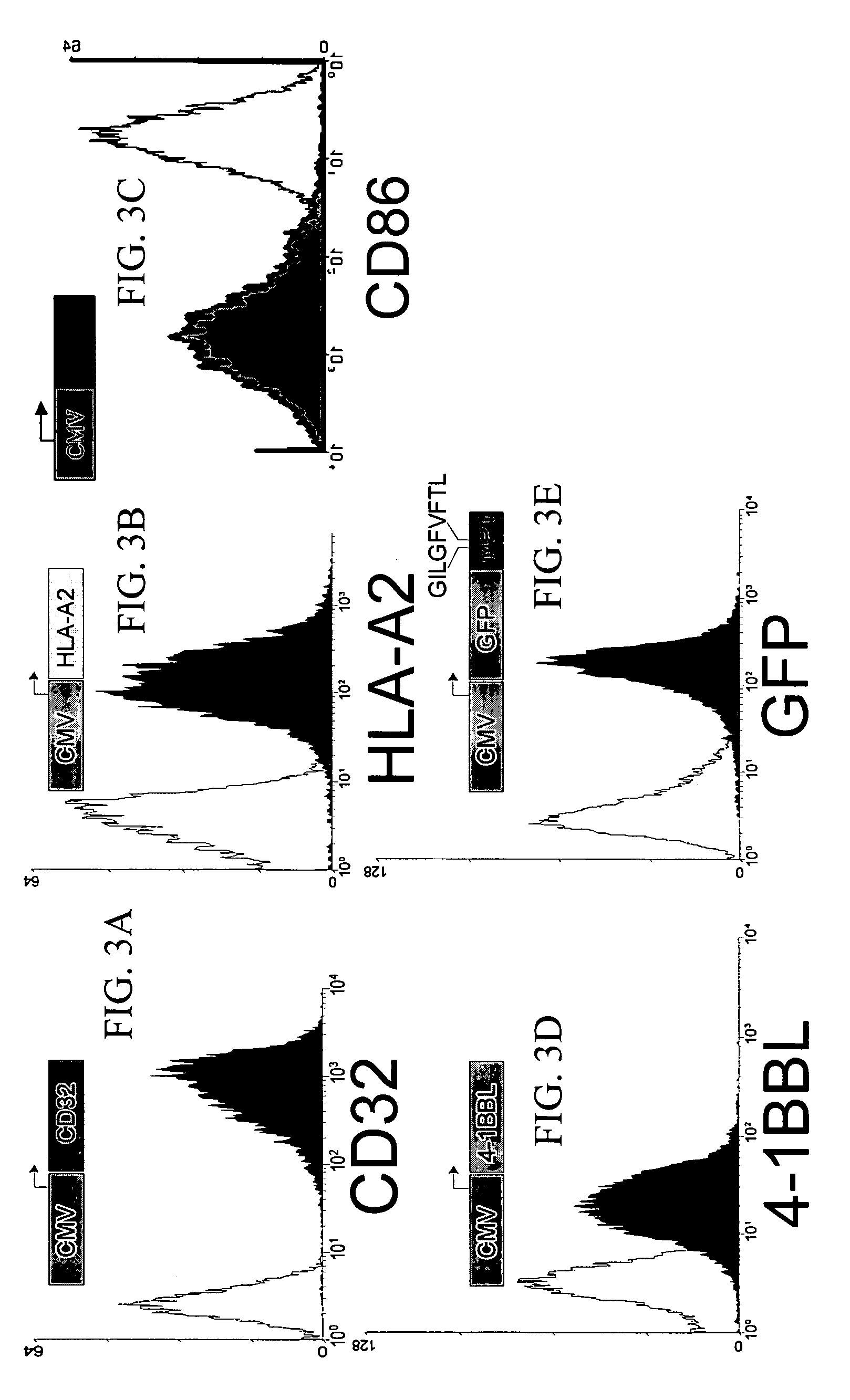Artificial antigen presenting cells and uses therefor
a technology of artificial antigen and presenting cells, which is applied in the field of artificial antigen presenting cells, can solve the problems of cd8 t cells ultimately failing to control hiv infection, difficulty in (1) expanding cd8 t cells, and (2) adding additional costimulatory, and generating antigen specific t cells with a high engraftment potential
- Summary
- Abstract
- Description
- Claims
- Application Information
AI Technical Summary
Benefits of technology
Problems solved by technology
Method used
Image
Examples
example 1
Development of Cell-Based Artificial Antigen Presenting Cells (aAPC) for Adoptive Immunotherapy
[0203]It has been demonstrated that the intrinsic growth requirements of CD4 and CD8 T cells differ (Deeths et al., 1997, Eur. J. Immunol. 27:598-608; Laux et al., 2000, Clin. Immunol. 96:187-197; Foulds et al., 2002, J. Immunol. 168:1528-1532). A cell-based aAPC was designed to enable genetic manipulation of the expression of different costimulatory molecules in addition to CD28 for the long term growth of CD8 cells. The culture system was based on the fact that costimulatory signals, in addition to those provided by CD28, are required for optimal CD8 cell growth. The human erythromyeloid CML cell line K562 (Lozzio et al., 1975, Blood 45:321-334) was used as a scaffold for the cellular aAPCs, because this cell line does not express HLA proteins that would promote allogeneic responses. However, K562 do express ICAM (CD54) and LFA-3 (CD58), both of which promote interactions with T cells (F...
example 2
In Vivo Therapeutic Use of aAPCs
[0236]The invention includes LV-engineered K562 aAPC for in vivo therapeutic vaccination and for the ex vivo expansion of T cells for therapeutic uses. The antigens, cytokines, and / or costimulatory molecules can be transduced into a K562 cell under the control of the same or separate promoters / regulatory sequences. Further, a nucleic acid encoding the tumor cell antigen can be transduced into the cell or the antigen can be otherwise loaded into the cell such that the cell processes and presents the appropriate epitope in the context of an MHC protein. This is because it has been demonstrated elsewhere herein that K562 cells have the ability to process and present antigens without the need to first identify or isolate the specific antigen or epitope required. Thus, a cell extract (comprising at least one membrane component of a tumor cell) can be loaded into the K562-based aAPC and the natural ability of the cell to process and present the relevant ant...
example 3
Ex Vivo Therapeutic Uses of aAPCs
[0238]Other aAPCs can be prepared for ex vivo use, such as, but not limited to, adoptive immunotherapy and gene therapy. Among the customized versions of aAPC for such ex vivo uses are, inter alia, the constructs disclosed in Table 4 below. That is, T cells isolated from a subject can be stimulated and expanded in vitro using these, or a wide plethora of other, aAPCs then the T cells can be introduced into the subject thereby providing adoptive immunotherapy thereto. Additionally, the expanded T cells can be genetically engineered to express an exogenous protein that was not expressed, or was expressed at a lower level, compared with expression of the protein in the T cell prior to, or in the absence of, the genetic engineering. Thus, the present invention provides both ex vivo cell based adoptive immunotherapy and gene therapy using the aAPCs of the invention to expand T cells used for autologous transplantation of a subject in need thereof. Table 4...
PUM
| Property | Measurement | Unit |
|---|---|---|
| w/w | aaaaa | aaaaa |
| time | aaaaa | aaaaa |
| concentration | aaaaa | aaaaa |
Abstract
Description
Claims
Application Information
 Login to View More
Login to View More - R&D
- Intellectual Property
- Life Sciences
- Materials
- Tech Scout
- Unparalleled Data Quality
- Higher Quality Content
- 60% Fewer Hallucinations
Browse by: Latest US Patents, China's latest patents, Technical Efficacy Thesaurus, Application Domain, Technology Topic, Popular Technical Reports.
© 2025 PatSnap. All rights reserved.Legal|Privacy policy|Modern Slavery Act Transparency Statement|Sitemap|About US| Contact US: help@patsnap.com



